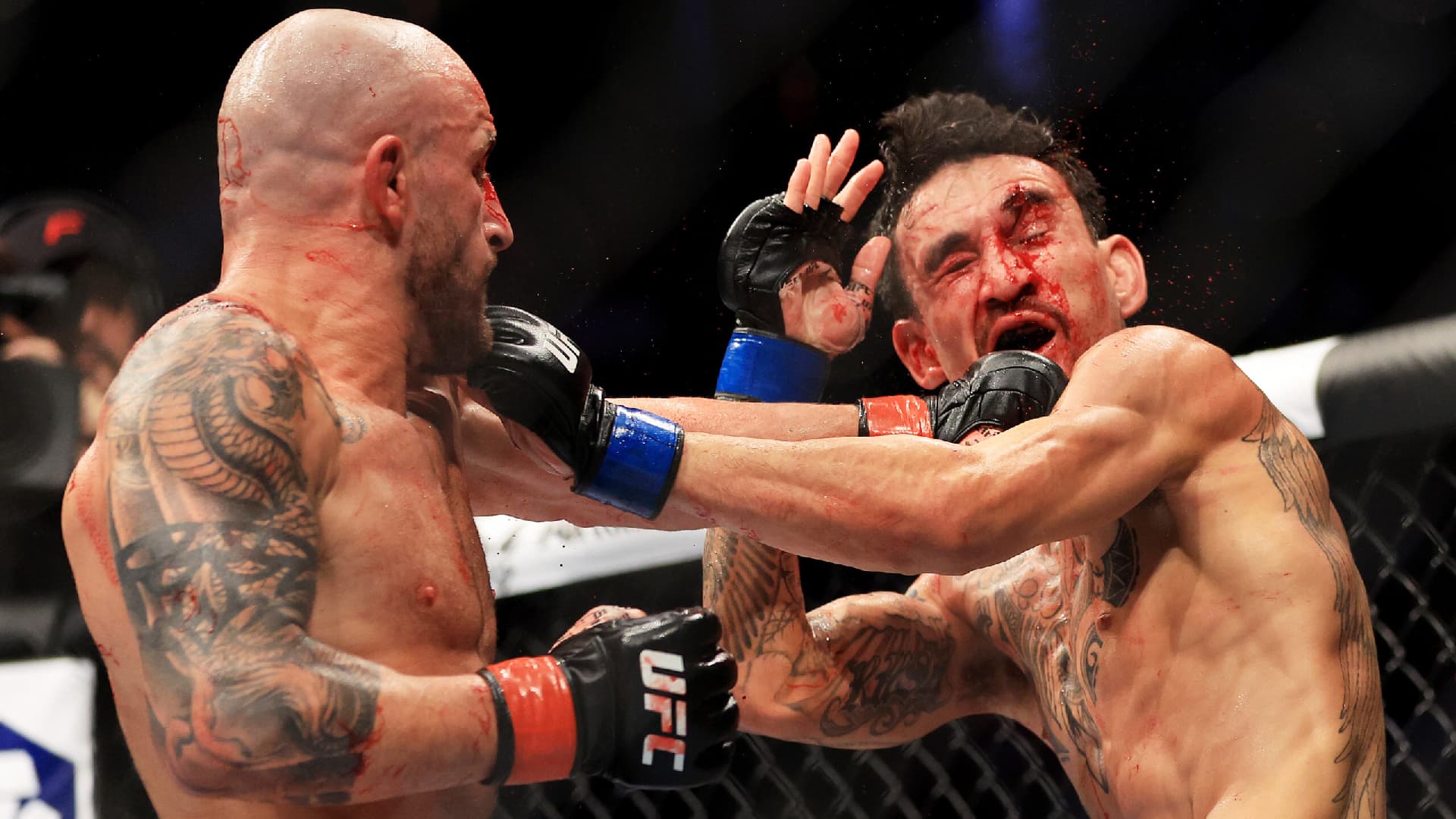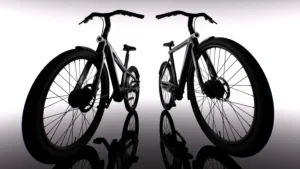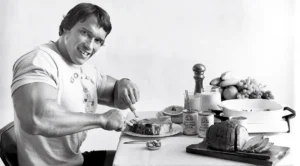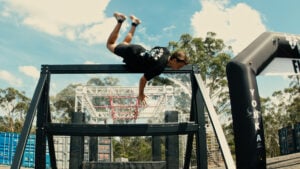Call me old-fashioned, but I believe knowing how to punch is an essential life skill next right up there with swimming, riding a bike, changing a tyre, and cooking yourself a fluffy plate of scrambled eggs.
Not because of any anarchic ideas about masculinity. Nor am I here to promote physical violence. It’s simply important to know basic self-defence should push come to shove.
In the words of the legendary Japanese swordsman and noted philosopher Miyamoto Musashi, who himself paraphrased an old Chinese proverb in The Book of Five Rings…
“It’s better to be a warrior in a garden, than a gardener in a war.”
Now, everyone will have some semblance of an idea about serving a knuckle sandwich with the crust still on. The crucial element here is knowing how to punch correctly. This is why I’ve enlisted the services of my own instructor: Jordan Ly from Open Sparring.
As a respected Muay Thai Kru (“Kru” being the Thai word for “teacher” or “instructor”), striking expert, and a scarily competitive talent in his own right, Jordan obviously knows a thing or two about unarmed combat.
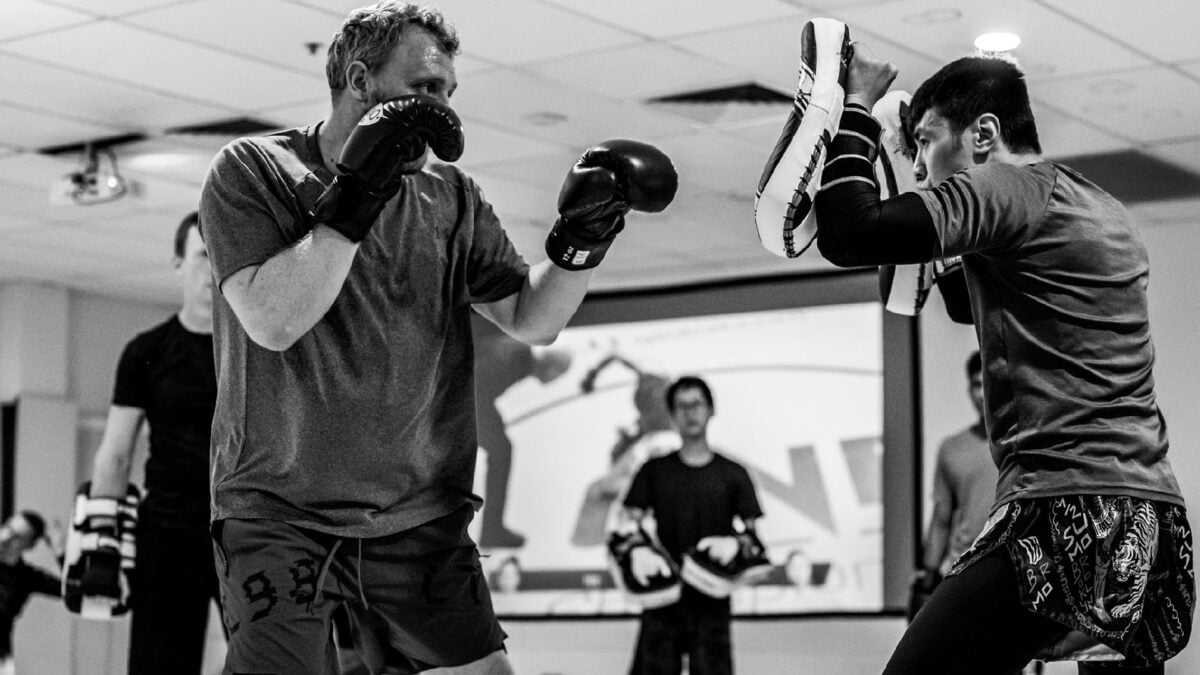
RELATED: Jake Gyllenhaal’s Workout & Diet Plan To Get ‘Road House’ Ripped
After a lifetime obsession with all things martial arts, in late 2009, Jordan booked a one-way flight to train with the legendary Muay Thai kickboxer Saenchai Sor. Kingstar. And from that point forward, it was no longer just another hobby.
Over a decade of training, teaching, as well as competing in various combat sports around the world later, Jordan now heads the Muay Thai Striking & Boxing Program at Open Sparring (which ranks in our definitive breakdown of Sydney’s greatest MMA gyms).
Perhaps one day in the near future we’ll get to cover kicks, grappling, and what to do when the fight goes to the ground — which this Sydney MMA gym proprietor is also more than capable of doing so — but for the time being, let’s start with a proper punch.
How To Throw A Punch — Table of Contents
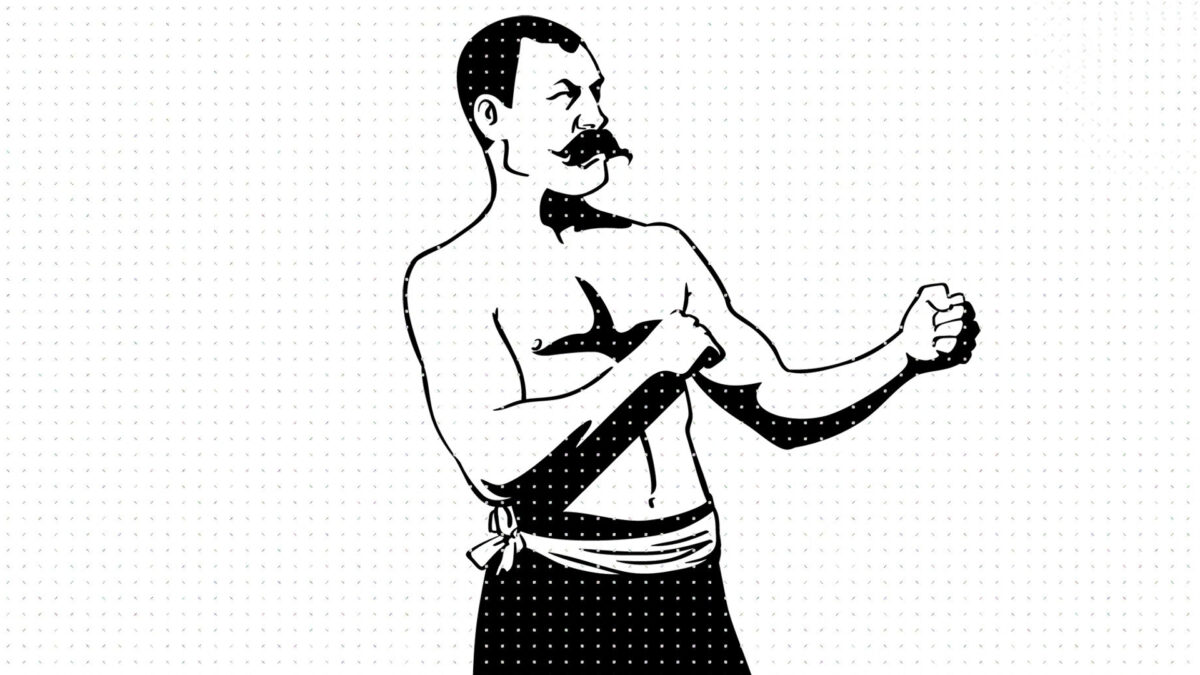
The Different Types Of Punches
While punches will vary depending on whether your discipline is Western-style boxing, any number of Eastern martial arts from karate and Lethwei to Muay Thai, or anything else in between, these are the main types of punches.
Please note we’ve excluded certain hyper-specific and, quite frankly, impractical hand strikes such as the hilarious “Leopard Blow” featured in the likes of Shaolin Kung Fu, and occasionally Krav Maga, as well as Wing Chun’s chain punch (I blame Ip Man for its misguided return to prominence).
Jab
A jab is a rapid and direct punch thrown with your lead hand to manage distance, set up combinations, and wear down your opponent/assailant.
Cross/Straight Punch
Although it’s a decidedly more powerful punch, similar to the jab, it’s rapid and direct. The key difference is that a cross/straight punch is delivered with your rear hand and gets some extra juice from the added rotation of your feet + hips + shoulders (more on this later).
Hook
A looping punch that targets the side of your opponent/assailant’s head and body; is often employed to circumvent a guard.
If it’s thrown with the lead hand, the lead foot must rotate. If it’s thrown with the rear hand, the back leg must rotate. You can opt for either a palm-down or palm-in approach (also more on this later).
Uppercut
A vertical punch that targets your opponent/assailant from below. Like the hook, it’s often employed to circumvent a guard.
Throwing a lead uppercut is a great counter punch to a stiff jab.
Overhand
As you will have discerned from the name alone, this strike is thrown over the top with your rear hand. It’s generally executed in tandem with the dropping of your body weight.
Backfist
A punch that makes use of your fist’s backside. Also see: spinning backfist.
Making A Proper Fist
Before we teach you how to throw punches, we must first ensure you know what to do with your hand:
- Begin with an open hand — fingers extended, thumb sticking straight out.
- Curl your fingers inward, bringing the tips down toward your palm’s centre. At this stage, it should look like you’re giving somebody the thumbs up.
- Now rest your thumb across the top of your fingers. More specifically, against the side of the index finger and middle finger.
- Always ensure your thumb is on the outside of your fingers in this fashion — tucking them inside is a quick way to dislocate your thumb.
- Keep your knuckles lined up and your wrist straight.
Also, avoid tensing until the very moment your fist makes contact with whatever/whoever you’re hitting. While your hand should be clenched, staying relaxed will allow for better movement.
“With all punches, you’re aiming to land exclusively with the two lead knuckles on your index and middle finger, not the entire surface area of your fist,” explains Jordan Ly.
“For the same reason a bullet is so deadly, you’re aiming to generate as much penetrating force as possible through a small, precise targeted area. This is what makes for a devastating blow.”
RELATED: The 13 Best Boxing Gyms In Sydney To Train Like A Pro
It’s All In The Stance
Every good punch requires a good stance. Because a good stance is how you’ll tap into all that kinetic power.
Different styles of combat will involve different stances. For example, Muay Thai dictates your hips remain square and forward-facing to check leg kicks, whereas boxing is far more bladed.
For the sake of keeping things dead simple, let’s delve into how your upper body and lower body should be positioned for an easy-to-learn boxing-style stance.
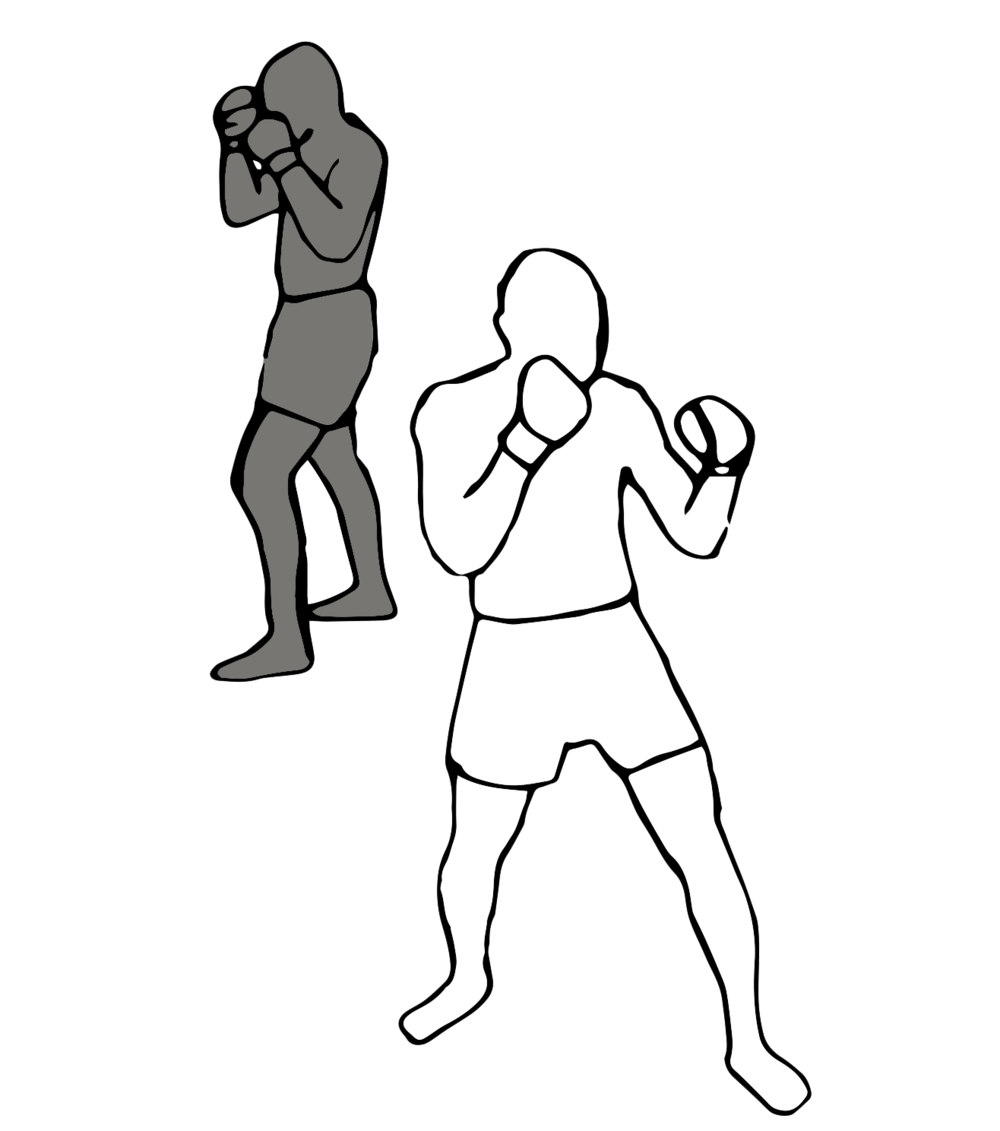
- Stand shoulder-width apart.
- Place your non-dominant foot forward at a 45-degree angle from your dominant foot.
- Keep your knees slightly bent, and find a balanced and stable position — almost as if you’re about to start running.
- Keep your heels aligned with the toes of your rear foot slightly raised.
- Shift your weight to the balls of your feet.
- Raise your lead hand and position it in front of your face at around chin level.
- Raise your rear hand to your cheek to protect your face with the elbow bent to protect your ribs; forearm angled towards the body.
- Relax your shoulders and tuck your chin down slightly.
- Maintain good posture — back straight, core engaged — and a strong base.
This is how you should be standing before and after throwing punches.
Jordan Ly: “Staggering your stance and dropping your level (i.e. standing a few centimetres lower than your natural height) will give you a better centre of gravity and stronger driving pressure.”
“All strikes start kinetically from your back foot pushing off the ground. Punching is a full-body compound movement!”
Southpaw Or Orthodox?
There are two ways to determine whether you’re an orthodox or southpaw fighter.
Dominant Hand
Your dominant hand is, of course, the stronger and more coordinated one.
If your right hand is more dominant, an orthodox stance probably suits you best — left hand in the lead position, right hand in the rear.
But if your left hand is more dominant, a southpaw stance is the way to go — right hand in the lead position, left hand in the rear.
Dominant Foot
Your dominant foot is the one you instinctively rely on for balance and stability.
Stand upright in a neutral position, as you would normally do, and have someone push you from behind. Whichever leg pops out in front as a baseline reaction will generally be the dominant side, and be positioned in the rear.
If your right foot is more dominant, opt for the orthodox stance — left foot forward, right foot in the rear.
If your left foot is more dominant, it’s southpaw time — right foot forward, left foot in the rear.
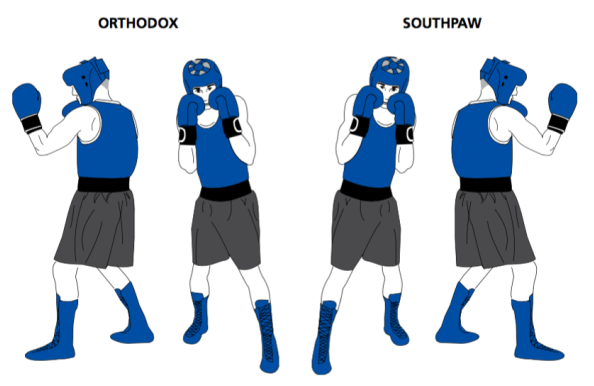
Pay attention to how comfortable and natural you feel as an orthodox or southpaw fighter, as well as the power you’re able to generate.
Jordan Ly: “Some helpful analogies for beginners to determine which is your dominant leg or hand — if you had to race against Usain Bolt in the 100-metre sprint, which leg would you have positioned behind you for the start of the race?”
“Or, if you were to live out your Lord of the Rings fantasy on a battlefield, which hand would be carrying your sword and which your shield?”
Punching Techniques
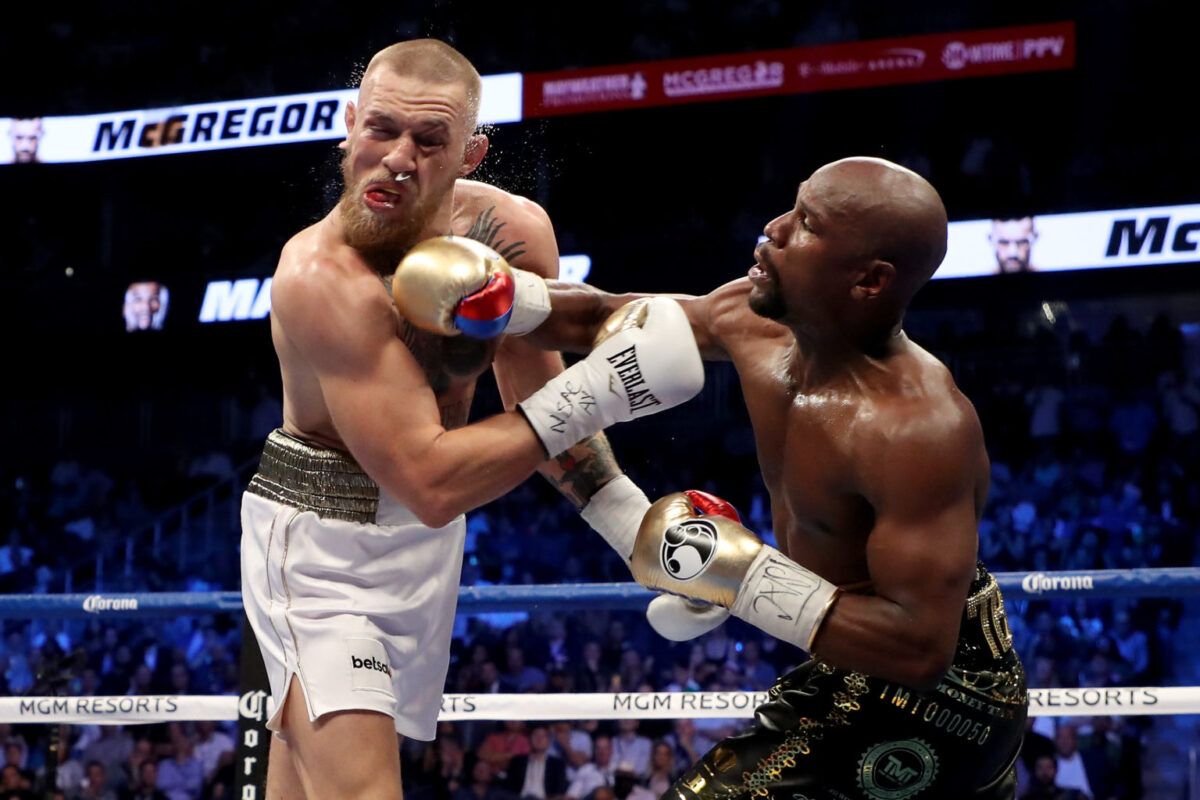
Onto the meat and potatoes of this entire article. Here’s how you throw each punch properly.
Jab
- Start in your default stance.
- Shift your weight ever so slightly onto your lead foot but don’t pivot.
- Extend your lead arm straight ahead, keeping in line with the starting point as if you’re beaming a laser from your line of sight.
- Rotate your lead shoulder and hips just a touch for extra power.
- Once you’ve made contact, retract your hand, and snap back to your guard position (don’t linger or else risk leaving yourself exposed).
Jordan Ly: “Consider taking a lead step with your jab to increase your reach, and try to raise your lead shoulder to chin level so you are safe from counter hooks.”
“The retraction back to your guard is almost more important than the extension of the jab. Unless you’re Anderson Silva with a significant striking accuracy of 68.5%, expect to miss almost 70% of the total number of punches you throw. Any time you miss, you risk being exposed to a hard counter right hand.”
Cross/Straight Punch
- Start in your default stance.
- Shift your weight ever so slightly onto your back foot.
- Rotate your back foot, hips, and shoulder, angling your body towards the front.
- Extend your rear arm straight ahead.
- Once you’ve made contact, retract your hand, and return to your guard position.
Jordan Ly: “Raise your back heel so you’re on the ball of the foot — this is the point of the foot where you’ll be pivoting and driving off.”
“Aim to bring your rear hip forward as you strike — this will give you slightly increased reach and more power in your punch.”
“To appreciate this point, try throwing a few crosses with your heel completely flat and completely off the ground, then compare the length and power of your strikes. Punching power starts from your legs.”
Hook
Lead
- Start in your default stance.
- Shift your weight ever so slightly onto your lead foot.
- Rotate your lead shoulder and hips inward, pivoting on the ball of your lead foot.
- At the same time, bring your lead arm around in a wide arc, keeping your elbow locked at a 90-degree angle.
- Depending on your personal preference, your can either face downward or towards you.
- Once you’ve made contact, retract your hand, and return to your guard position.
Rear
- Start in your default stance.
- Shift your weight ever so slightly onto your back foot.
- Rotate your rear shoulder and hips inwards, pivoting on the ball of your rear foot.
- At the same time, bring your rear arm around in a wide arc, keeping your elbow locked at a 90-degree angle.
- Depending on your personal preference, your can either face downward or towards you.
- Once you’ve made contact, retract your hand, and return to your guard position.
Jordan Ly: “A hook with your palm facing towards you will have slightly longer range than the variation with your palm down.”
“However, the palm down variation is arguably more powerful since you are leading with your index knuckle. Both variations are fantastic with advantages and disadvantages, and both should be mastered.”
Uppercut
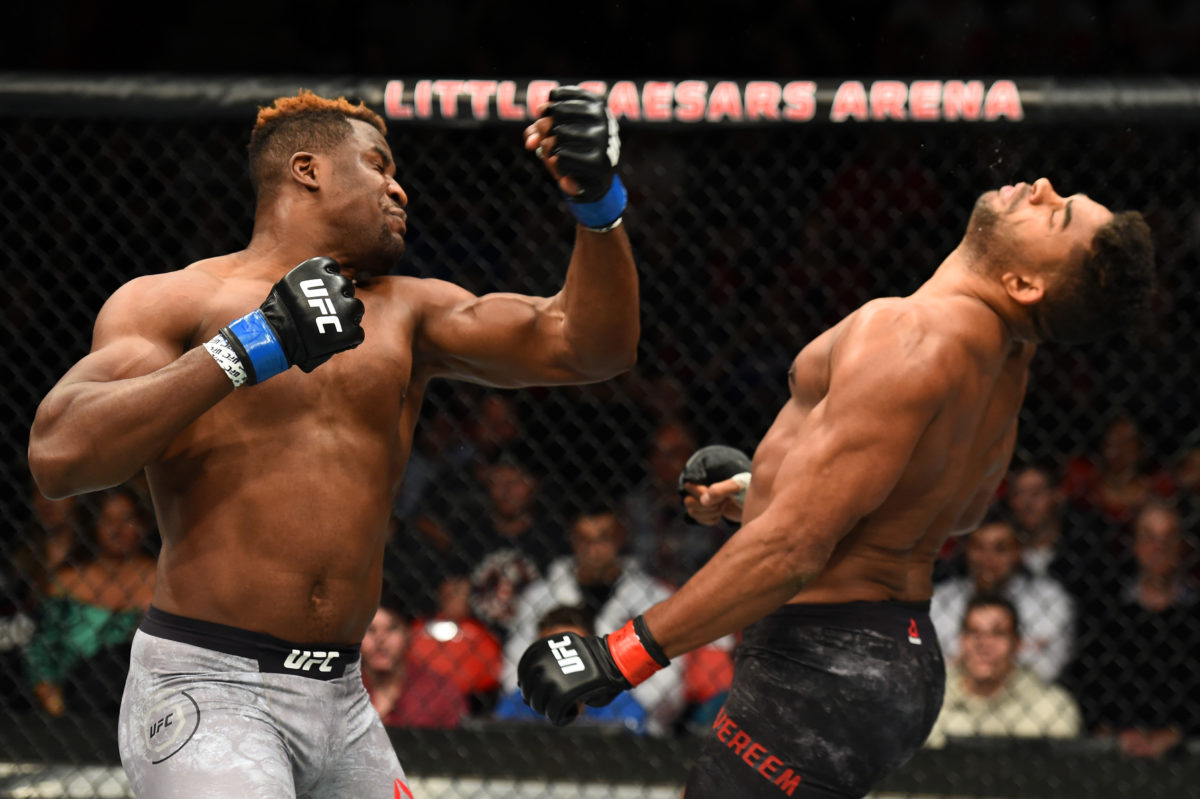
Lead
- Start in your default stance.
- Shift your weight ever so slightly onto your lead foot.
- Bend your knees and drop down a touch load up for the upward spring.
- Rotate your lead shoulder and hip inward, pivoting on the ball of your lead foot.
- At the same time, bring your lead hand up in a tight, vertical arc, keeping your elbow locked at a 90-degree angle.
- Aim for your opponent/assailant’s chin.
- Engage your core and generate power through your legs, hips, and torso.
- At the uppercut’s apex, twist your wrist until your palm faces toward you.
- Once you’ve made contact, retract your hand, and return to your guard position.
Rear
- Start in your default stance.
- Shift your weight ever so slightly onto your rear foot.
- Bend your knees and drop down a touch load up for the upward spring.
- Rotate your rear shoulder and hip inward, pivoting on the ball of your rear foot.
- At the same time, bring your rear hand up in a tight, vertical arc, keeping your elbow locked at a 90-degree angle.
- Aim for your opponent/assailant’s chin.
- Engage your core and generate power through your legs, hips, and torso.
- At the uppercut’s apex, twist your wrist until your palm faces toward you.
- Once you’ve made contact, retract your hand, and return to your guard position.
Jordan Ly: “The uppercut is one of the riskiest shots you can throw because of the exposure you give your face when you drop your hand. However, it is certainly one of the most devastating and rewarding strikes you can land if you pull it off.”
“Hide your uppercut with either a setup, feint, or another strike to occupy your opponents attention and limit the chance of counters.”
“Maybe another article on punching strategy, Garry?”
Indeed.
Overhand
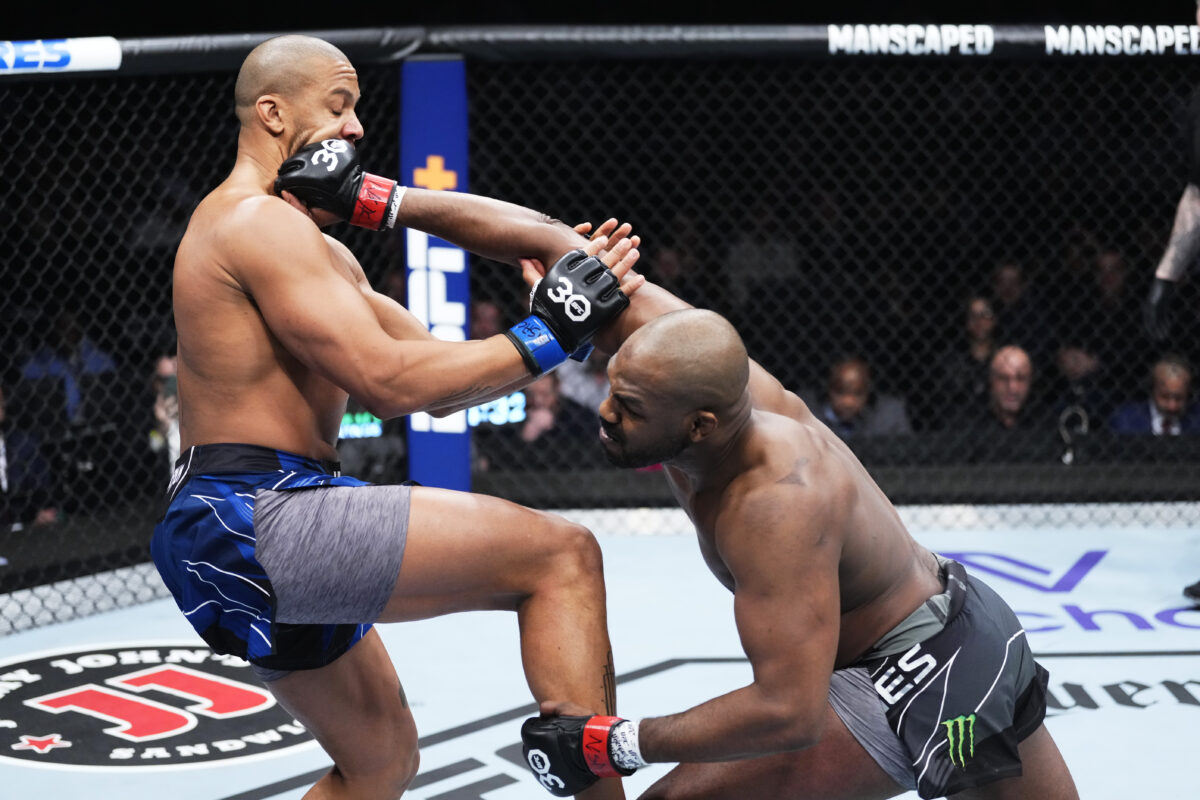
- Start in your default stance.
- Shift your weight ever so slightly onto your back foot.
- Drop your body, dipping your rear arm.
- Pivot on the ball of your back foot, rotating your hips and shoulders simultaneously.
- Swing your rear arm in a wide arc over the top, targeting your opponent/assailant’s head.
- Aim to hit with your first two knuckles (middle and index fingers) to maximize impact and minimize injury.
- Keep your elbow bent throughout the entire movement. It’ll provide a whipping motion as you extend your arm.
- Once you’ve made contact, retract your hand, and return to your guard position.
Jordan Ly: “The overhand is a very important punch to have in your arsenal against anyone who might be taller than you. Move your head to the outside of your lead leg when you throw so your head is off-centre.”
Backfist
Static
- Start in your default stance.
- Bring your rear arm across your body with the palm facing inward and elbows bent.
- Rotate your hips and shoulders in the direction of the strike.
- Extend your arm quickly and forcefully.
- Strike with the flat part of the back of your hand, around the base of your fingers.
- Once you’ve made contact, retract your hand, and return to your guard position.
Spinning
- Start in your default stance.
- Shift your weight ever so slightly onto your lead foot.
- Pivot on the ball of your lead foot and turn your body away from your opponent/assailant.
- As you pivot, bring your rear arm across your body with the palm facing inward and elbows bent.
- Rotate your hips and shoulders in the direction of the spin.
- When your spin gains velocity, extend your arm quickly and forcefully.
- Strike with the flat part of the back of your hand, around the base of your fingers.
- Once you’ve made contact, retract your hand, spin back in the direction you entered, and return to your guard position.
Jordan Ly: “The spinning backfist is an incredibly dangerous strike. So much so that it is actually illegal in traditional boxing because of the very real (and valid) damage you can inflict with your forearm, wrist, or elbow if you fist overshoots.”
“Despite all dramatic appearances, the spinning backfist is also very safe to throw… so long as you don’t lose your footing.”
Bonus: Superman Punch
- Start in your default stance.
- Take a small step forward with your lead foot and redistribute your body weight onto it.
- Lift your rear knee up towards your chest and drive forward off the ground.
- At the same time, extend your lead arm forward, almost as if you were about to throw a jab.
- As this happens, kick your rear leg forward and upwards, almost as if you were throwing a front kick.
- Punch with your rear hand.
- Make sure your body is upright and maintain balance throughout.
- Focus on generating power from the explosive drive; extension of your rear leg.
Jordan Ly: “A great strike you can utilise suddenly against an opponent who likes to back away or when you have someone cornered.”
“In contrast to the straight cross, this is one of the few rear hand strikes where the power is generated from the lead foot driving off the ground.”
Increasing Your Punching Speed & Power
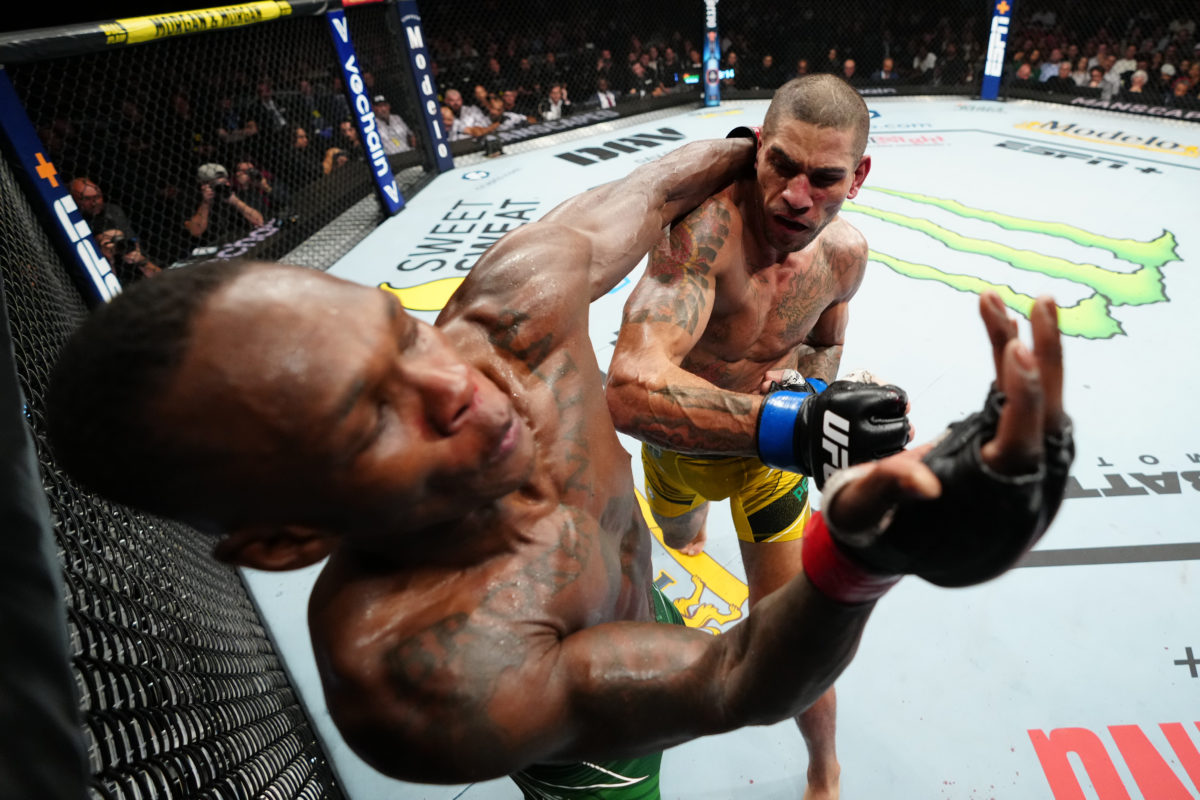
While we can’t exactly guarantee you’ll be on par with real-life professional fighters (despite the grabby headline), there’s an entire range of ways in which you can increase both punching power and punching speed.
Aside from lifting weights and working a punching bag, according to Kru Jordan, you can…
“Shadow box in front of a mirror! Strike with full extension in your arms and think about your feet and how they are positioned.”
Jordan adds: “Everybody is built slightly differently, so punching mechanics will vary from person to person. A process of self-inquiry and mindful experimentation with your stance and posture will help you refine and validate your technique.
“‘How do my punches feel when I stand this way?’ ‘Am I stronger when I pivot this way?’ ‘Is my reach better when I step like this?’ etc.”
“Or just visit any good martial arts gym in your local area — like Open Sparring. A decent coach should always spend a few minutes with you to assess and set you on the right path.”
Ultimately, it’s all about refining your technique. So be sure to drill with careful detail to every single component of the hand strikes outlined above.
Amateurs practice until they can get it right. Professionals practice until they can’t get it wrong.
To book a trial lesson with the man himself, hit the link below.
Also read:
